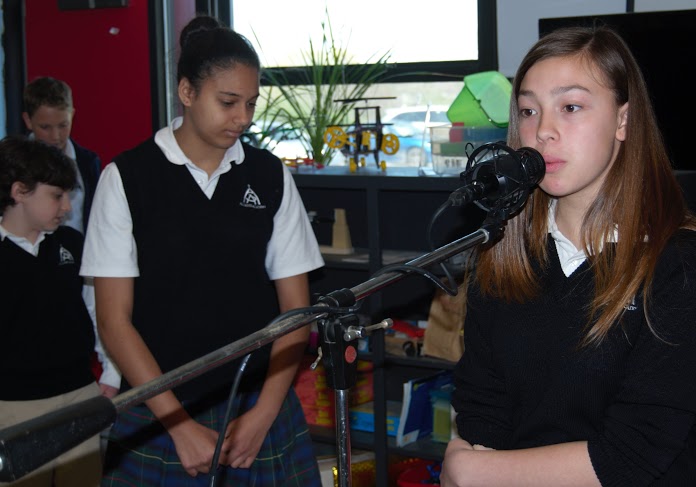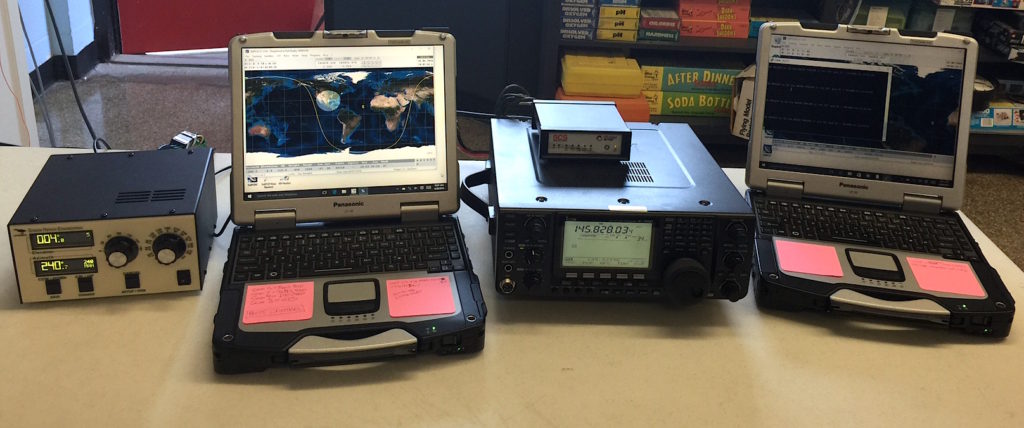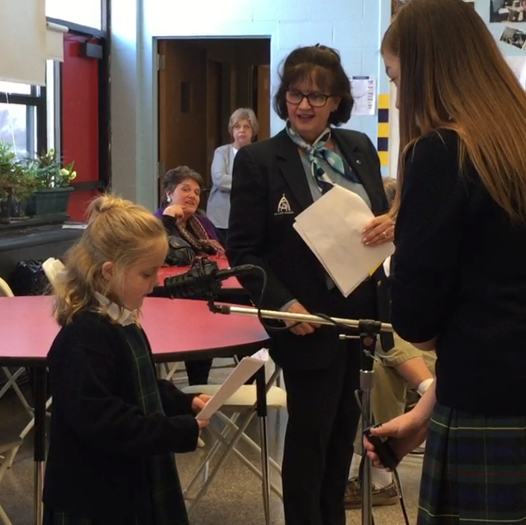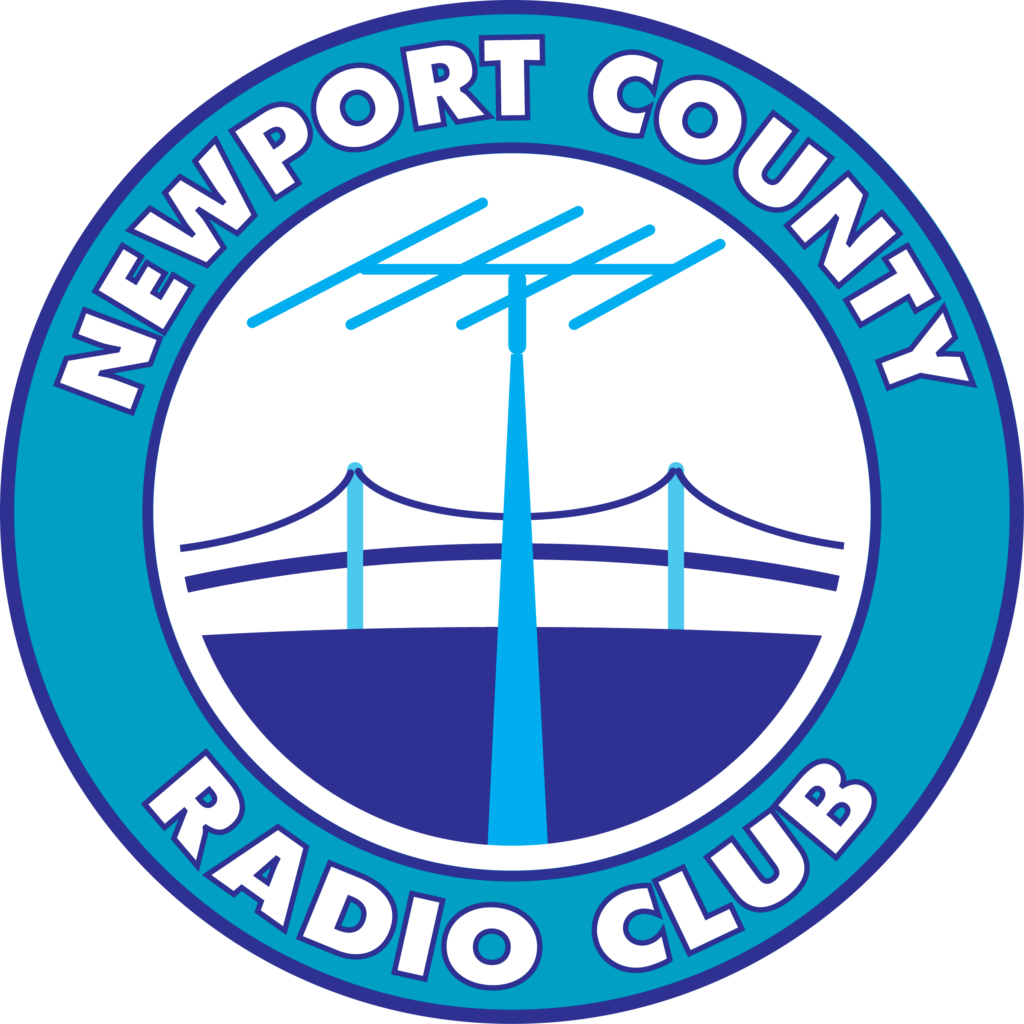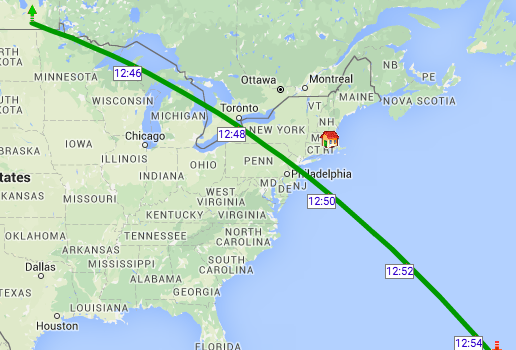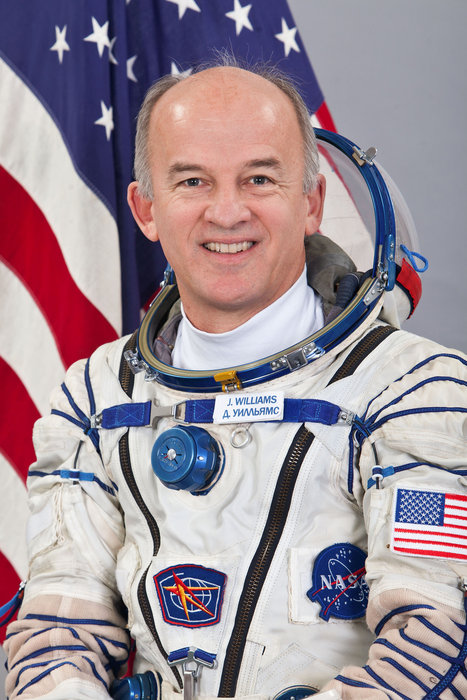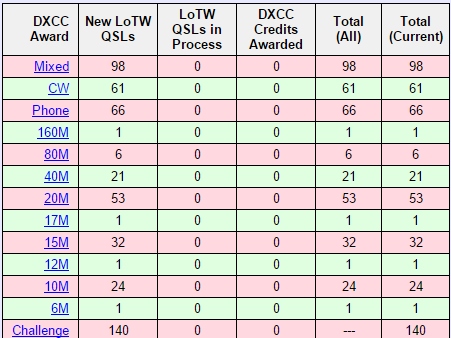We had another practice session today with two viable passes:
13:09L 17 degree max elevation (SW – N – E)
14:45L 66 degree max elevation (SW – S – SE)
The backup antenna was verified and was working as expected. The primary antenna was also working fine. The polarity switch was rewired and powered from the primary radio supply and worked fine.
A total of three PCs were verified as working correctly. Only two are required to be working on event day. The backup radio (another IC-9100) is now in-hand.
It appears that all we have to do is get SatPC running, then start the Green Heron tracking software, enable tracking/disable tracking, then enable it again to have things work correctly from the very beginning.
The antennas were pre-positioned prior to both passes which allowed us to hear a few packets prior to the ISS rising above the horizon.
The first pass was at 13:09L (17 degree max):
– First packet heard at 13:10:28 (5 degrees elevation)
– First packet repeat at 13:13:15 (10 degrees elevation)
– Last packet repeat at 13:18:54 (6 degrees elevation)
– Last packet heard at 13:19:30 (2 degrees elevation)
So a very low-long distance pass resulted in 5m39s of solid packet connectivity. I suspect voice would have actually worked about 8 minutes of the pass.
The second pass at 14:45L (66 degree max):
– First packet heard at 14:46:35 (1 degree elevation)
– First packet repeat at 14:47:15 (4 degrees elevation)
– Last packet repeat at 14:55:03 (8 degrees elevation)
– Last packet heard at 14:56:30 (1 degree elevation)
So a much closer pass resulted in 7m48s of solid packet coverage. There was a rather pronounced fade toward the end of the pass, which prompted us to use the polarity switch. The ISS immediately picked up about 5 S-units of signal strength, and we were able to continue packet exchanges until 14:56:00 — so solid packet coverage for 8m45 seconds by using the polarity switch. I suspect voice would have worked for almost 9 minutes of the pass.
Bottom line: Excellent session. Everything worked correctly.
Next practice session on Thursday May 5. RF Crew to report by 11 AM. First pass at noon. Second pass at 13:35. NOTE: second pass is almost identical to our event pass on Friday. We expect to be working with the kids again on Thursday (so on-air mic tests).

